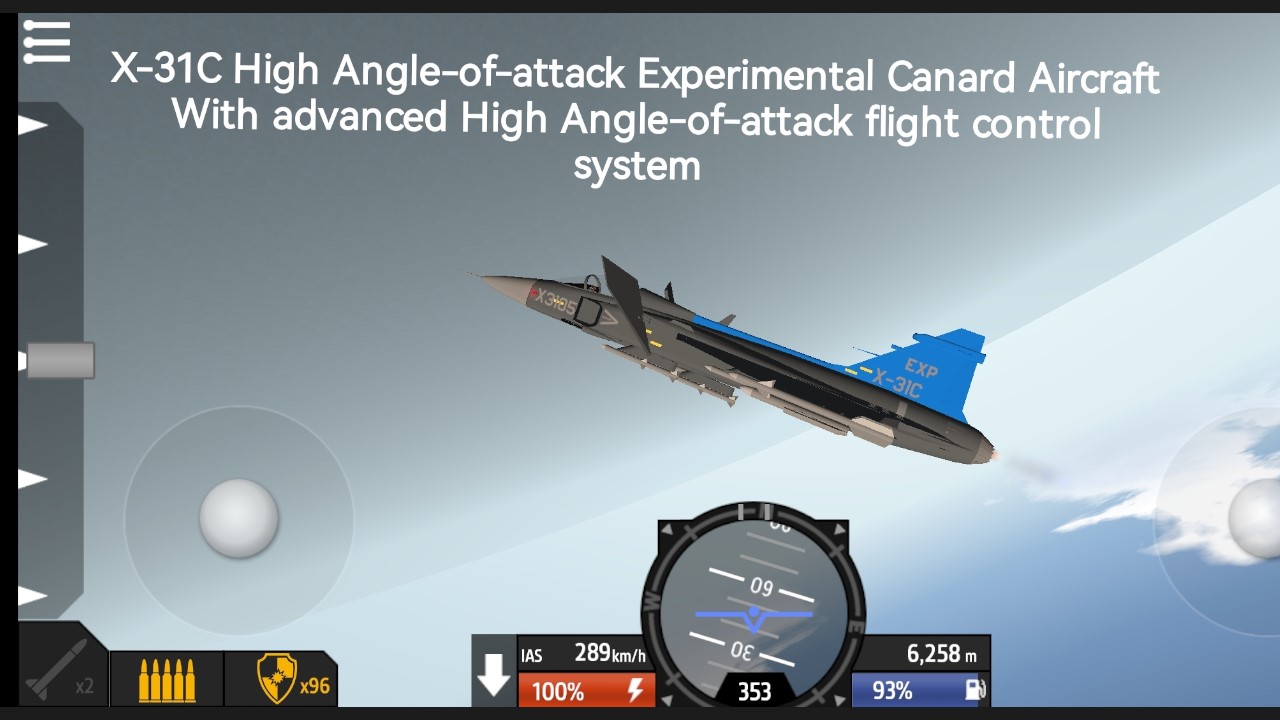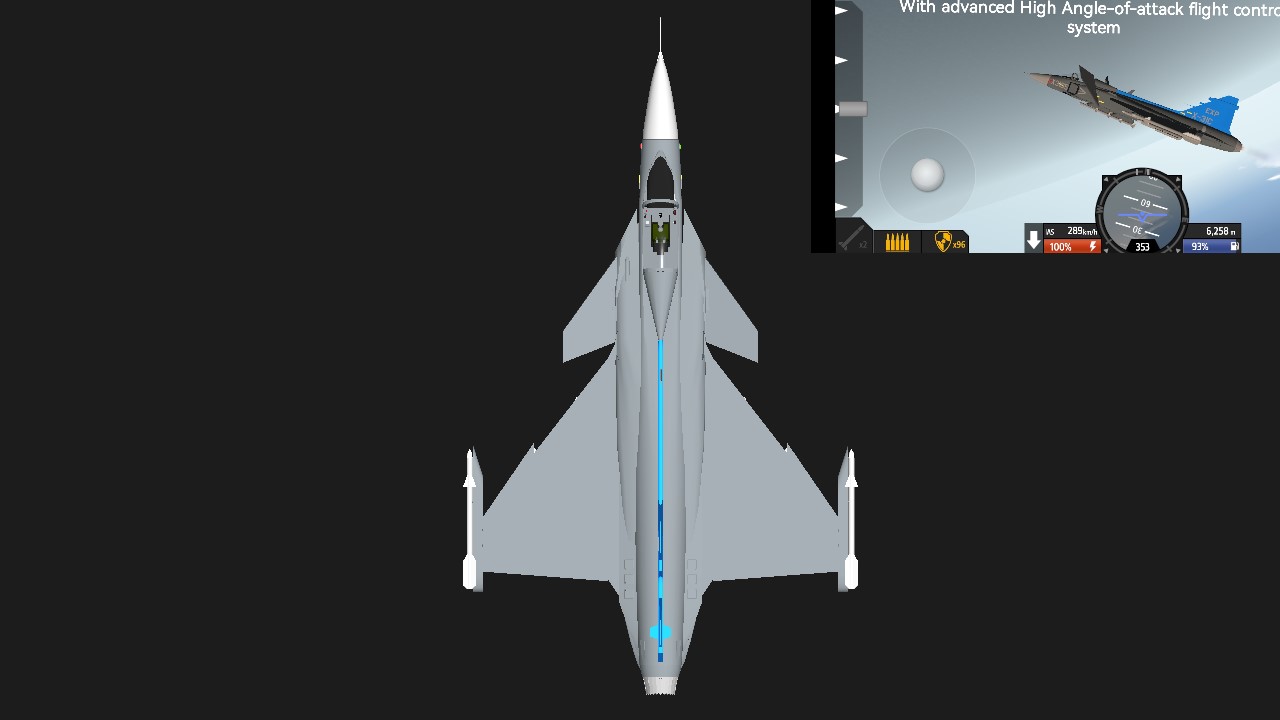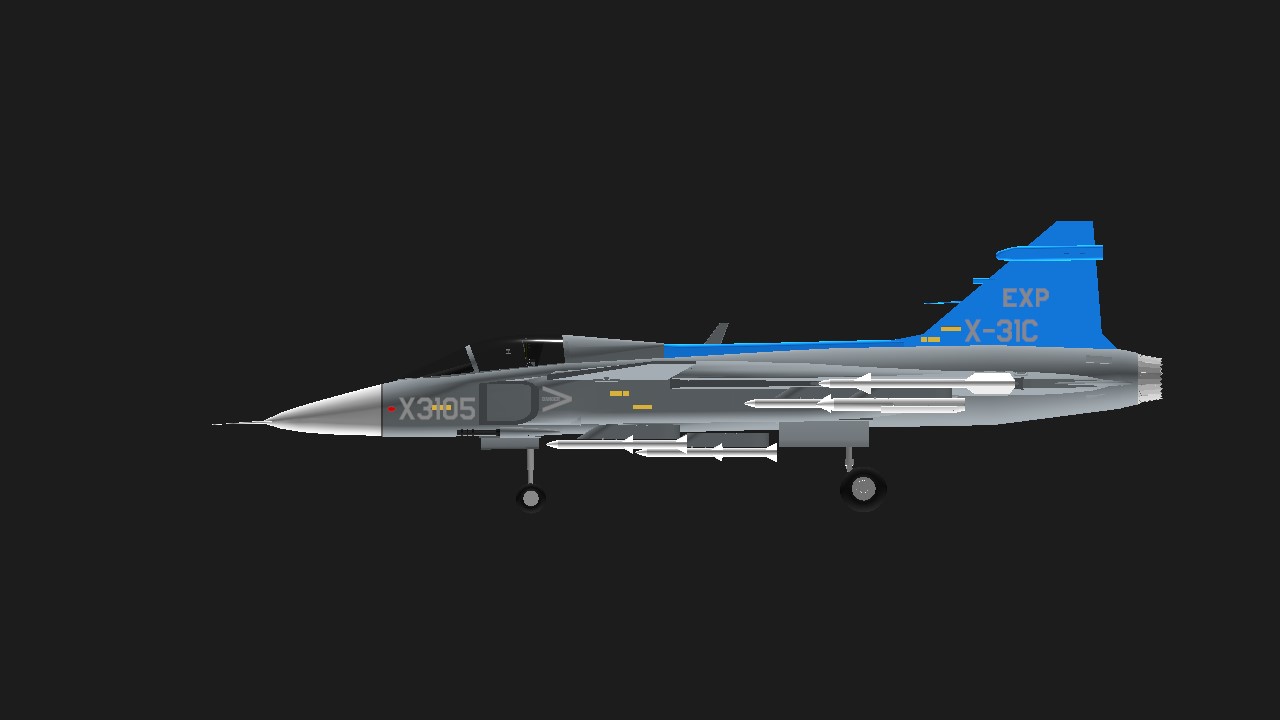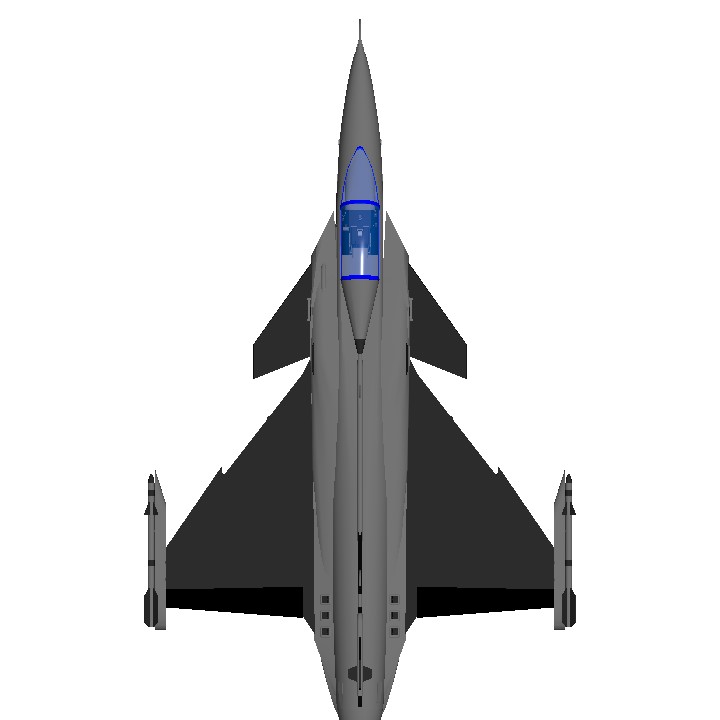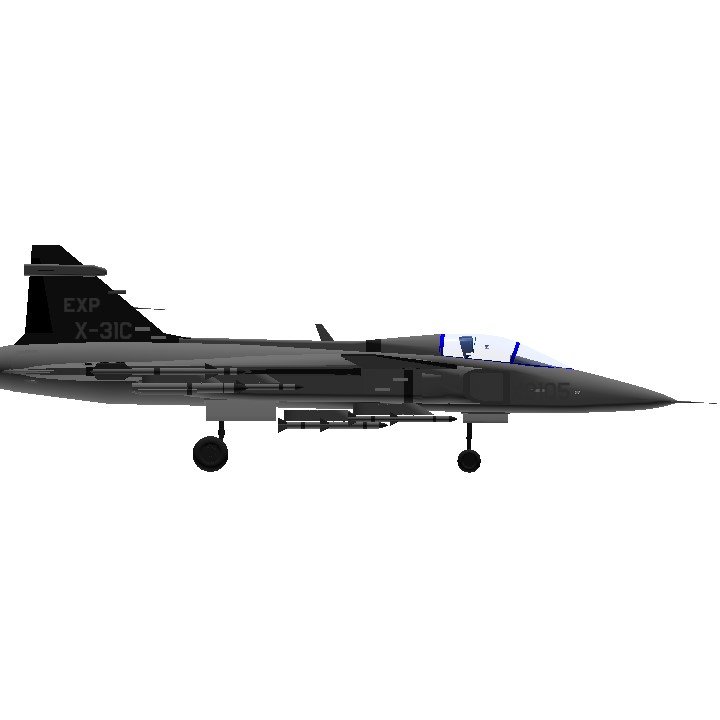X-31C High Angle-of-attack Experimental Canard Aircraft with high Angle-of-attack flight control sys
Video link:
https://b23.tv/JRDkVfH
X-31C is an experimental canard wing aircraft developed by DAPRA and NASA in 1986.
Its goal is to provide a flight control system for high angle-of-attack maneuver.
X-31C High Angle-of-attack Experimental Canard Aircraft with high Angle-of-attack flight control system, which is available at a very high angle-of-attack and controllable at 150 degrees angle-of-attack.
Maximum load factor limit system and very high angle-of-attack maneuverability have been added into its flight control system.
Maximum load factor: +9g, -3g.
General Instructions:
AG 1 Open cockpit door
AG 2 Open fuel refueler
AG 3 Open Post-stall maneuver high angle-of-attack control mode
AG 4 Open exterior light and Do not care angle-of-attack while AG3
AG 5 AGCAS Automatic Ground Collision Avoidance System
AG 7 Throw all exterior weapon
Specifications
General Characteristics
- Predecessor Pigpen
- Created On Android
- Wingspan 30.0ft (9.2m)
- Length 50.9ft (15.5m)
- Height 16.0ft (4.9m)
- Empty Weight 17,844lbs (8,094kg)
- Loaded Weight 21,107lbs (9,574kg)
Performance
- Power/Weight Ratio 1.245
- Wing Loading 63.2lbs/ft2 (308.5kg/m2)
- Wing Area 334.0ft2 (31.0m2)
- Drag Points 1611
Parts
- Number of Parts 193
- Control Surfaces 5
- Performance Cost 1,156

